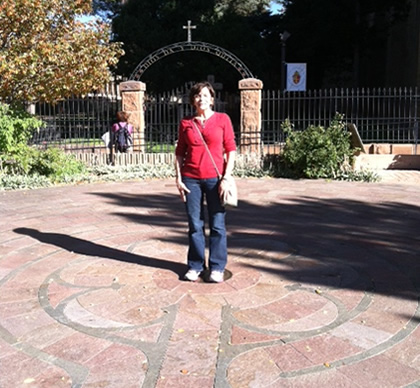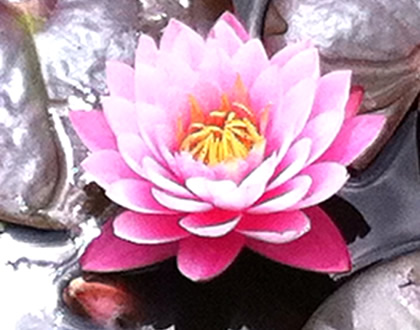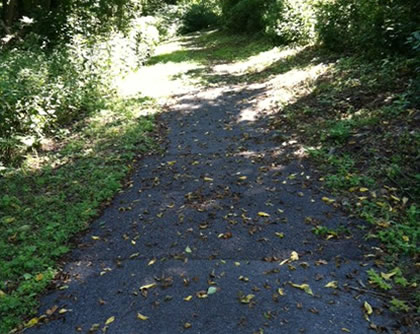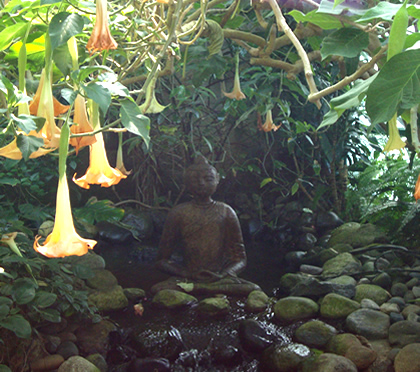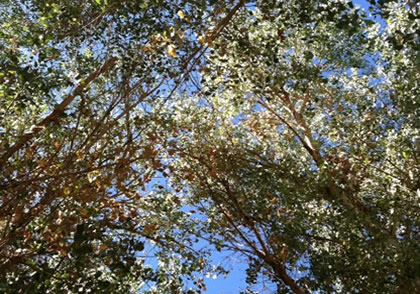
Sometimes we think we understand something, but we do not yet have enough information for a full picture.”
….Nicolai Bachman, The Path of the Yoga Sutra
From 33,ooo feet, the land below lay bleached, the color of sandstone, and dotted with craters lined by low jagged ridges. Here and there a cloud threw a shadow across the earth. But the view still left a sense of barreness under a startling blue sky and relentless sun.
At a point close to our destination the desert yielded to Lake Mead, gathering water from the Colorado River. The chalklines of the lake’s previous shorelines lay naked. Soon tidy neighborhoods of houses appeared, ringed in greenery, many with rectangles of blue in the yards.
Finally the plane approached McCarren Airport, and the jewels of the Las Vegas Strip appear paying homage to New York, Paris, Luxor, Mandolay Bay, among others.
Ten years ago I never would have guessed we would be making Las Vegas our destination twice a year. But somehow, our grown children, with their children, have a way of leading us to places we never thought we would go.
My image of Las Vegas and its environs has been just what I have described – starkly barren desert, suburban sprawl, and the crazy, fantasy world of “The Strip.” As well as leading us to new places, our children, and in this case, grandchildren, have a way of opening our minds to what we hadn’t seen before. In this case it was the Clark County Parks and Recreation Wetlands Park.
One Sunday morning, two grandchildren, our son, his wife, Jim and I visited the Las Vegas Valley wetlands. I wasn’t sure what I expected but it wasn’t what I found – except for the unrelenting heat of the sun. Vegetation of all kinds bordered the path we followed, which led us to a pond. As we stood at its edge, soft-shelled turtles, both large and small, swam to near we stood. A pair of American coots swam on the far side of the pond. Fish of various sizes nibbled in the waters close to the shore.
Before the development of Las Vegas city, this wetland had been an oasis in the valley. But development had led to the run-off of storm water, building of sewage treatment plants and water flows that deepened a channel allowing water that had fed the wetlands to migrate into a wash. Recognizing the important role the wetlands played in purifying water and providing habitat for plants, birds, and animals led to projects that restored the wetlands we walked though.
Sitting in a grove of old cottonwood trees, whose presence signals the existence of water in the Southwest, I found my thoughts coming to the Yoga Sutra. How often, I thought, had I made a judgment from what I had observed, only to learn later that it was not the “whole story.” Sutra I.8 calls assumptions and judgments such as I made “misapprehension” or viparayaya – “comprehension which is taken to be correct until more favorable conditions reveal the exact nature of the objects,” according to Mr. Desikachar in his Reflections on the Yoga Sutra-s of Patanjali.
While my assumptions about Las Vegas hadn’t serious consequences, it was still a lesson for me to be wary thinking I understand a place, or a person, or a thing, for I seldom have the full story. Mr. Desikachar reminds us, “The aim of yoga practice is to recognize and control the causes of misapprehension.”
